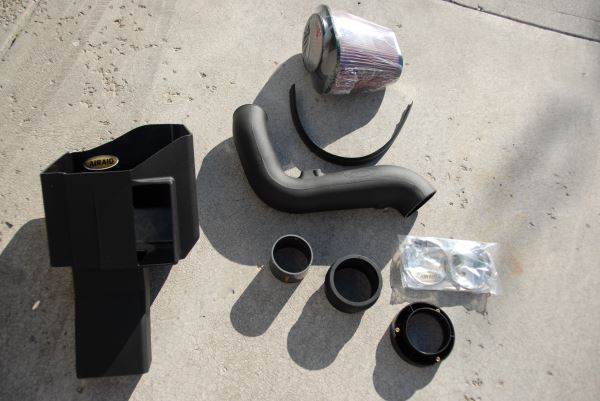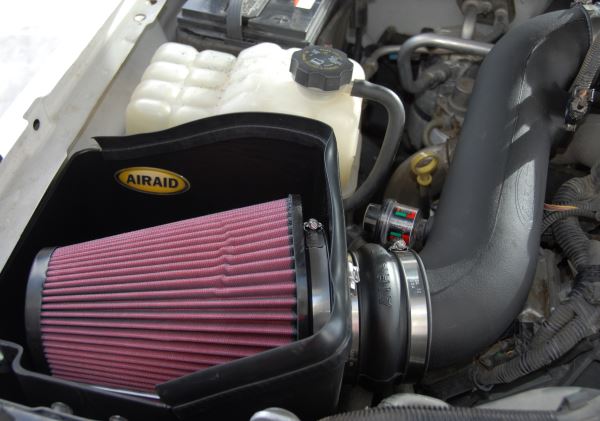Saying that something is “a bunch of hot air” is a pretty common way to say that it’s worthless. Whether it’s a politician or a door-to-door salesman, we’ve all run into our fair share of people full of hot air. If we don’t like hot air, why would it be any different for our engines?
What exactly is the problem with hot air going into the engine? Well, it’s not that the hot air is inherently bad, it’s just that it’s not as efficient as it could be. To solve this problem, it’s common to install a cold air intake. So what does the cold air intake do to solve this problem?
Well, there are a couple of things it does more efficiently than the stock air intake on your truck. For starters, cold air is denser than hot air, and therefore contains more oxygen. More oxygen in the same amount of air equals more burn for the same volume, which means your engine gets more power. It’s commonly held that for every percentage point the air density changes, the engine power and efficiency changes in equal measure. So if your new cold air intake ups the air density by three percent, your engine will make three percent more power.

Another thing the cold air intake does is make the initial opening where it pulls the air in larger, which moves more air through the engine. Think of the difference between, say, a tiny sipping straw in a coffee cup compared to a normal fountain drink straw. Then what about a shake straw, or even foregoing the straw altogether and simply drinking straight from the cup? Which opening is delivering the most liquid the fastest? Also, how many twists and turns does the straw have? (If you’re smart, the right answer is none.) Seriously, how long does it take to get a sip from one of those crazy straws you get at theme parks or in a box of cereal? Well, in a way, the same thing happens with a standard OEM air intake. Because the vehicle manufacturers have to worry about cabin noise, the stock system has those same twists, turns, and baffles to minimize both the noise from the intake as well as the whine of the turbo. Aftermarket companies don’t have such stringent restrictions, since they are appealing to an inherently smaller user base who knows what they’re getting into. They can make intakes with huge openings and relatively few bends in the tubes to deliver as much air as quickly as possible. If the side effect is a louder engine, well, how else are you going to let your neighbors know how bad your truck is?
Now, don’t expect to all of a sudden be tearing up the dyno just because you slapped on that cold air intake. Your gains will be more subtle than that, somewhere in the 10 to 30hp range, with a corresponding torque increase of about 20 to 55 ft/lbs. You will also see a small bump in fuel economy, although pretty much just on longer drives, not just tooling around town. Also, they tend to help the other systems in the truck work a little smoother, so everything gets a little boost.
One immediately noticeable benefit to a cold air intake is how easy it is to service the air filter. It just sits right there in plain view, so it’s easy to access, and most aftermarket filters are reusable, so all you’re doing is taking it out, cleaning it, and sticking it right back in. That right there is a pretty big savings over the life of the truck.

Finally, as far as do-it-yourself projects go, cold air intakes are one of the easiest, which is why they’re often one of the first modifications people make when they get a truck. You’ll obviously want to follow the instructions that come with it, but you’re basically just undoing a couple of bolts, pulling the old one out, and slotting the new one in. The hardest part is making sure the OE mass air flow sensor gets moved to the right place on the new intake, since that hooks up to the truck’s computer and will cause issues if it’s not hooked up properly.
So that’s it! That’s literally all there is to know about cold air intakes (DISCLAIMER: THIS IS NOT TRUE). Now all you have to do is figure out which manufacturer makes the best one for you because this is something you’ll want to do if you haven’t already.